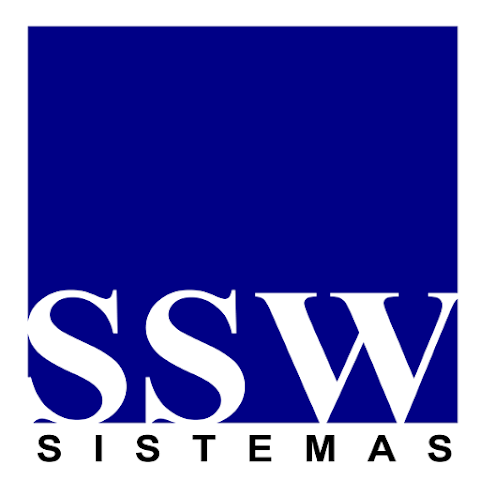Digitalization: Transform Your Logistics and Boost Efficiency
Is your operation still relying on paper, spreadsheets, and endless email threads to check proofs, release payments, and invoice? In logistics and fleet management, every minute counts — and manual processes create hidden costs, rework, and a loss of visibility. Digitalizing documents and workflows is the fastest way to gain operational efficiency, reduce errors, and accelerate results.
In this article, you’ll see how Meu Rastreio’s Digitalization turns documents into actionable data, connects teams end to end, and delivers tangible gains across delivery management, fleet, and back office — without complexity.
Why digitalize your logistics processes now?
The hidden cost of paper and manual data entry
- Time wasted locating, checking, and typing data from CT-e (Brazilian electronic bill of lading), NF-e (electronic invoice), delivery receipts, and proofs.
- Rework due to incomplete or illegible information.
- Billing delays caused by “missing documents.”
- Physical loss or misplacement that impacts SLAs and audits.
Compliance risks and limited visibility
- Difficulty maintaining reliable audit trails.
- Fragmented access to critical documents across finance, operations, and fleet.
- Risks of noncompliance with internal policies and regulations (e.g., LGPD) due to missing access controls and retention policies.
The ripple effect across operations
- Deliveries without a valid digital proof of delivery (e-POD) increase disputes and DSO.
- Lack of structured data stalls efficiency analysis and decision-making.
- As your volume grows, paperwork grows exponentially.
Digitalizing is more than “taking a picture of a document.” It’s converting information into data, automating validations, and standardizing the flow among drivers, operations, back office, and customers.
What is Meu Rastreio Digitalization
Meu Rastreio’s Digitalization is a module built for logistics operations and fleet management. It captures, organizes, and validates your critical daily documents — from digital delivery receipts and checklists to CT-e, NF-e, CRLV (vehicle registration), maintenance notes, and expense receipts — linking them to tracking, route planning, and finance.
How it works in practice
- Mobile and web capture: photos, PDFs, and batch uploads with quality adjustments (crop, perspective correction, sharpness).
- OCR and indexing: automatic reading of key fields (NF key, CT-e number, license plate, CPF/CNPJ) for search and matching with orders, trips, and routes.
- Validations and business rules: checks for required fields, expirations, and consistency before advancing.
- e-POD and e-signature: proof of delivery with in-app signature, geolocation, and timestamp.
- Configurable workflows: review, approval, and billing with notifications and SLAs per step.
- Secure repository: audit trail, role-based access control, retention, and LGPD compliance.
- Integrations and APIs: connect with TMS, WMS, ERP, and BI; trigger events via webhooks (e.g., “document approved”).
- Offline operation: drivers capture and sync when the signal is back, ensuring continuity in the field.
The outcome: documents become reliable, real-time data that automatically trigger the next step — without rework.
Measurable benefits for your operation
- Lower administrative costs: less printing, transport, and physical storage; fewer hours of manual typing.
- Faster billing: validated proofs and CT-es speed up the time from delivery to invoice.
- Team productivity: rule-driven checks focus attention on exceptions only.
- Better SLAs and customer experience: real-time e-POD visibility reduces questions and disputes.
- Compliance and audit readiness: complete trails and instant search by document and version.
- Planning and analysis: structured data fuels reports and operational efficiency KPIs.
KPIs that typically improve with digitalization
- Review time per document
- Billing lead time (delivery → invoice)
- Share of deliveries with valid e-POD
- Rework rate due to data discrepancies
- Cost per processed document
Practical example (hypothetical)
A regional carrier with 200 deliveries/day adopted Meu Rastreio Digitalization for e-POD, CT-e, and delivery receipts:
- Before: 2–3 days to gather paper proofs, type data, and invoice.
- After: in-app e-POD capture, automatic CT-e validation, and immediate handoff to finance.
- Results after 60 days:
- 70% reduction in average time from delivery to billing.
- 40% drop in administrative rework.
- Fewer delivery disputes thanks to geolocated, photo-backed e-POD.
These numbers are illustrative but reflect typical gains when you leave paper behind.
Use cases by role
Fleet managers
- Digitalization of CRLV, driver licenses, insurance policies, and inspections with expiration alerts.
- Maintenance and fuel receipts to control costs and support audits.
- Digital safety checklist before departure.
Operations and route planning
- Proof of pickup and delivery with signatures and damage photos.
- Automatic linking of NF/CT-e to the trip or route.
- Checklists by cargo and customer type to reduce nonconformities.
Administrative and finance
- Document review and approval with rules and SLAs.
- Automated billing preparation with attachments and audit trails.
- Advanced search by CNPJ, NF-e key, license plate, or order number.
Drivers and partners
- Simple app, offline capture, and real-time validations.
- Step-by-step guidance via checklists — fewer errors and rework.
- Upload expenses and receipts with predefined cost centers.
Integrate with your stack (TMS, WMS, ERP, and BI)
Meu Rastreio connects to what you already use:
- APIs and webhooks to create, update, and query documents and metadata.
- Enrichment with Meu Rastreio’s own tracking and route planning data.
- Export to your ERP and feed dashboards in your BI.
Digitalization doesn’t become a new silo — it connects your operation end to end.
Security and compliance
- Role-based access controls and audit logs.
- Encryption at rest and in transit.
- Retention and anonymization policies aligned with LGPD.
- Versioning and approval history.
Security isn’t optional when dealing with customer, driver, and partner data.
30-day rollout roadmap
- Map critical documents
- Which proofs block billing, payments, or audits?
- Examples: e-POD, CT-e, NF-e, delivery receipts, CRLV, maintenance notes.
- Define metadata and rules
- What must be validated? Required fields, due dates, links to orders/routes.
- Configure templates and workflows in Meu Rastreio
- Checklists, e-POD, OCR, and validations by process type.
- Integrate with your systems
- Connect TMS/ERP and define webhooks for key events.
- Train the team and run quick pilots
- Start with one branch/customer, adjust, and scale.
- Measure and optimize
- Track time, rework, and e-POD rate to drive continuous gains.
Trends shaping digitalization
- Advanced e-signature and e-CMR: stronger legal certainty and less paper.
- AI for classification and extraction: less typing, more automation.
- Collaborative visibility with customers: real-time document portals.
- ESG and the cost of paper: lower environmental impact and related expenses.
- Data governance: robust access and retention policies become standard.
Why Meu Rastreio?
- Logistics specialists: ready-made flows for e-POD, CT-e, NF-e, fleet, and audits.
- Native integration with tracking and route planning.
- Fast time to value and UX designed for field and back office.
- Consultative support to design rules and KPIs for your process.
Conclusion: turn documents into data, and data into results
Digitalizing processes isn’t just “going paperless.” It’s about gaining efficiency, predictability, and control — from the street to the back office. By connecting capture, validation, and automation in a single flow, Meu Rastreio’s Digitalization lowers costs, accelerates billing, and elevates operational quality.
Next step
- Want to see it in your context? Book a free demo with our specialists and learn how to implement in weeks, not months.
👉 Book a free demo: https://meurastreio.app/pt-BR/digitalizacao











